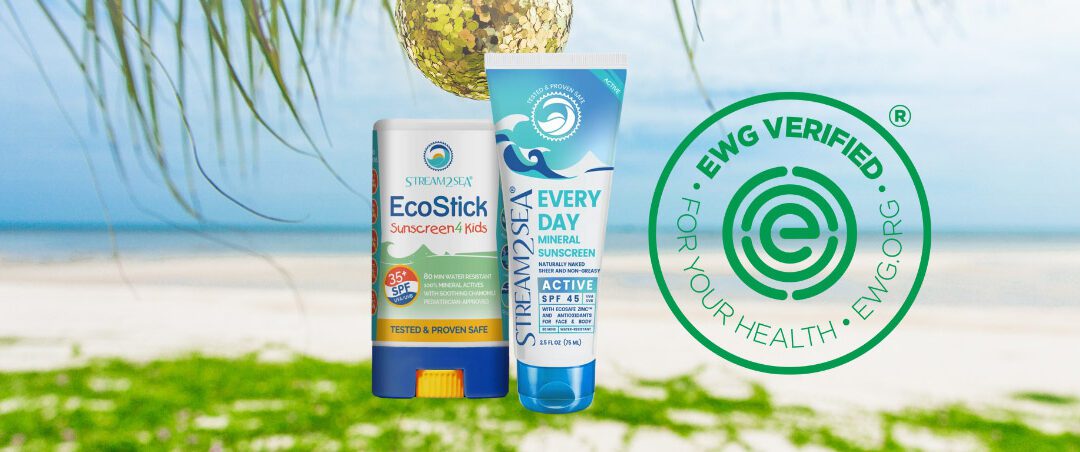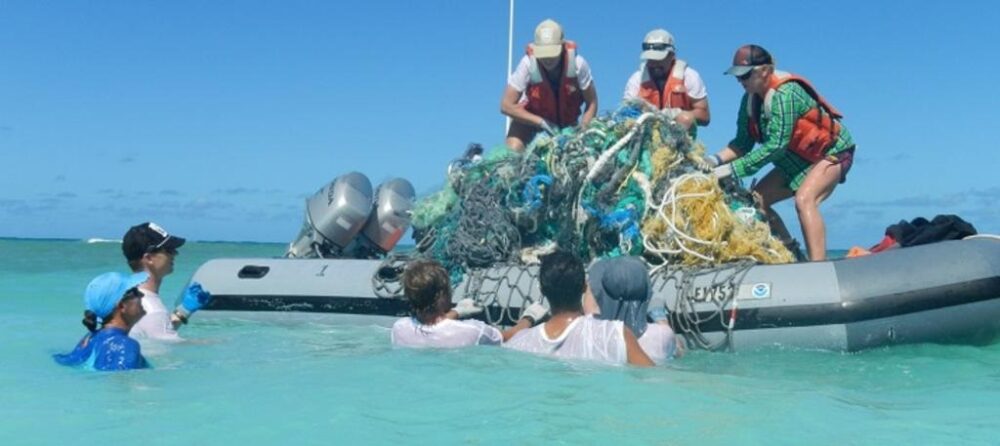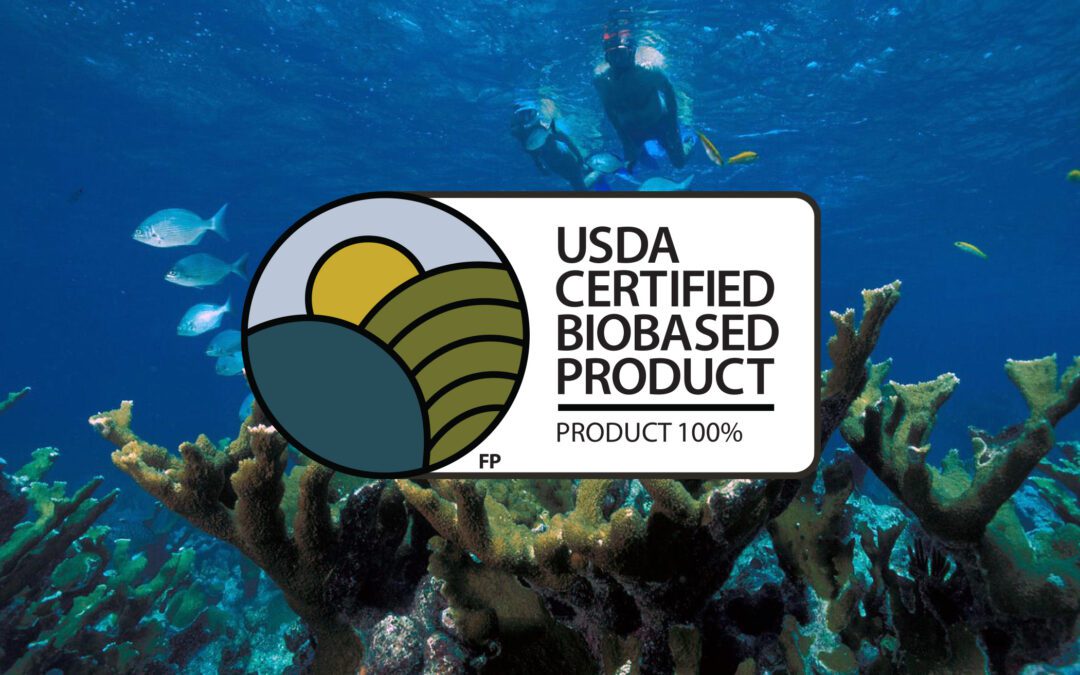Chemical-free sunscreen is a hot topic right now — understandably so! The relationship between sunscreen ingredients and marine health is a huge concern, and often when we hear about what can be done to make a change, we are told to avoid “toxic chemicals.” So who wouldn’t think to avoid all chemicals? That’s a great way to avoid the toxic ones, right? Well, not exactly. I’m Autumn Blum. Most of my friends and the Stream2Sea community know me first and foremost as a diver — an avid explorer of our natural underwater world. Some folks may not know that I’m a huge chemistry buff. I studied organic chemistry and cosmetic chemistry, so I know a thing or two about chemicals, and I’d love to share what I know with you!
The “C” Word
Sometimes people ask “Do your products contain chemicals?” This question is valid, but it shows the power that certain buzzwords can have in important discussions like this one, about marine health. What do I mean? On a scientific level, absolutely everything is made up of chemicals. You are made up of chemicals. The air we breathe is made up of chemicals. So, my answer to this question is, “My products don’t contain any harmful or toxic chemical ingredients.” Each ingredient used in our products is consciously chosen: sustainably sourced botanicals, nourishing oils and processed ingredients with a small carbon footprint. Before selecting, I check each ingredient’s compatibility with the Whole Foods standard, EcoCert, Environmental Working Group and of course the Material Safety Data Sheet. I never include the kinds of toxic chemicals that can be found on our Ingredients to Avoid list, and in many traditional skincare products. My products do however contain chemicals — safe ones! — so how can any sunscreen be touted as “chemical-free?”
“Chemical-Free”
In short, it can’t. As we’ve already discussed, nothing is chemical-free. But, being a buzzword floating around in communities with awesome intentions to protect coral and marine health, some folks are consciously choosing mineral-based sunscreens instead of ‘organic chemical’ sunscreens. Of course, mineral sunscreens are chemicals too, but they are inorganic chemical compounds. Confused again? Understandable. What I’m saying is that “organic” doesn’t always mean that it’s safe.
The “O” word
Organic — when most people see the word “organic,” they think “natural”, “wholesome” and “safe”. Most people, however, aren’t chemists who know that “organic” also means carbon-based. So what’s the big deal? Simply put, some really nasty chemical sunscreen ingredients can be labeled “organic” because they’re made with carbon. The manufacturers aren’t lying, but they certainly aren’t telling the whole truth… Take oxybenzone, also known as Benzophenone-3, for instance. According to the manufacturer, oxybenzone is an organic compound commonly found in sunscreens due to its UVA and UVB absorbing qualities. This compound has the empirical chemical formula C14H12O3, classifying it as an ‘organic’ chemical ingredient. Despite the wording, this is not the kind of chemical you want on your body, or in the ocean. A study by the U.S. Centers for Disease Control (CDC) reveals that 97% of Americans are contaminated with oxybenzone. This ingredient has been linked to allergies, hormone disruption,and of course, coral mortality. A recent report even shows that 85% of 53 samples of mother’s milk tested positive for chemical sunscreen ingredients. That includes oxybenzone and octyl methoxycinnimate that are carbon-based and therefore can be labeled as organic.
A Problem With the Language
If you find yourself reading or using misleading sunscreen ingredient language, know that you are not alone, but that it’s on all of us to make an effort to question these industry buzzwords, and learn more when we are making choices that will impact our lives and the lives of marine creatures. Next time I feel the misleading impulse to say that Stream2Sea is chemical free, I’ll remember to say “we do not contain any harmful or toxic UV filters” instead, and I hope you will do the same!
Take Action
Please friends… know your ingredients! Just because a product says that it is ‘natural’, ‘organic’ or even ‘ocean reef safe’, does not mean that it is. Turn the bottle over and check out the ‘active’ and ‘inactive’ ingredients. Read the last few lines of the inactive ingredients — formulators like to bury nasty stuff there. Avoid chemical UV filters and tell your friends why. Direct them to the video below if they want to know why it’s important to avoid harmful chemicals, and remember you can always order a handy Ingredients to Avoid card to know which chemicals are toxic, and what to look out for on your ingredients lists.



